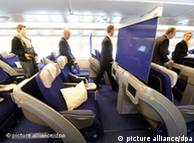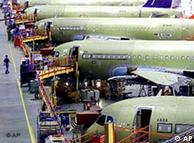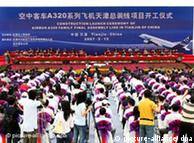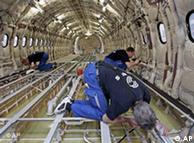
Kura, a chain in Japan, relies on small staffs and lots of automation, like sushi-making robots.
By HIROKO TABUCHI
Published: December 30, 2010
SAYAMA, Japan — The Kura “revolving sushi” restaurant chain has no Michelin stars, but it has succeeded where many of Japan’s more celebrated eateries fall short: turning a profit in a punishing economy.
Hiroko Tabuchi for The New York Times
Kura puts codes on the bottom of its plates to keep track of how long a sushi portion has been circulating on a conveyor belt.
Efficiency is paramount at Kura: absent are the traditional sushi chefs and their painstaking attention to detail. In their place are sushi-making robots and an emphasis on efficiency.
Absent, too, are flocks of waiters. They have been largely replaced by conveyors belts that carry sushi to diners and remote managers who monitor Kura’s 262 restaurants from three control centers across Japan. (“We see gaps of over a meter between your sushi plates — please fix,” a manager said recently by telephone to a Kura restaurant 10 miles away.)
Absent, too, are the exorbitant prices of conventional sushi restaurants. At a Kura, a sushi plate goes for 100 yen, or about $1.22.
Such measures are helping Kura stay afloat even though the country’s once-profligate diners have tightened their belts in response to two decades of little economic growth and stagnant wages.
Many other restaurants and dining businesses in Japan have not fared so well. After peaking at 29.7 trillion yen in 1997, the country’s restaurant sector has shrunk almost every year as a weak economy has driven businesses into price wars — or worse, sent them belly-up. In 2009, restaurant revenue, including from fast-food stores, fell 2.3 percent, to 23.9 trillion yen —20 percent below the peak, according to the Foodservice Industry Research Institute, a research firm in Tokyo.
Bankruptcies have been rampant: in 2009, 674 dining businesses with liabilities of over 10 million yen went under, the highest number in the last five years, according to Teikoku Data Bank, a credit research company.
In November 2009, Soho’s Hospitality, the company behind celebrity restaurants like Nobu and Roy’s, filed for bankruptcy. Roy’s is now run by another company, while Nobu’s chef, Nobu Matsuhisa, has opened a new restaurant elsewhere in Tokyo with Robert De Niro.
Along with other low-cost restaurant chains, Kura has bucked the dining-out slump with low prices and a dogged pursuit of efficiency. In the company’s most recent fiscal year, which ended on Oct. 31, net profit jumped 20 percent from the same period a year earlier, to 2.8 billion yen.
In the last two months alone, Kura has added seven stores.
“If you look at the restaurant business, consumers are still holding back because of employment fears and falling incomes, and there’s no signs that will change,” said Kunihiko Tanaka, Kura’s chief executive, who opened Kura’s first sushi restaurant in 1995. “Amid these worsening conditions, our company feels that consumer sentiment matches, or is even a tail wind” to the Kura business, he told shareholders earlier this year.
The travails of Japan’s restaurant industry, and the changes in Japanese dining habits, may be among most visible manifestations of how Japan’s “bubble economy” excesses in the 1980s have given way to frugal times since the bubble burst in 1990.
With wages weak — average annual private sector pay has fallen 12 percent in the last decade, to 4.05 million yen, or about $49,300, in 2009 — the Japanese now spend less on eating out. An average single-person household spent 163,000 yen on dining in 2009, 27 percent less than in 2000, according to detailed budget surveys compiled by the Ministry of Internal Affairs.
In a survey by Citizen Holdings, the watchmaker, of 400 men in their 20s to 50s, the average time spent at cafes and restaurants plunged from 7 hours and 52 minutes a week in 1990 to 2 hours and 25 minutes in 2010.
An aging population is also depressing restaurant sales. More than one-fifth of Japan’s population is already over 65, and surveys indicate that older people tend to eat out less. The population is also shrinking, reducing the restaurants’ potential customer base.
Meanwhile, Japanese companies have cut back sharply on their entertainment expenses, further hurting restaurant sales. Total corporate spending on dining and entertainment has halved from a peak of 9.5 trillion yen in 1991 to 4.8 trillion yen in 2008, according to data from the National Tax Agency.
“The restaurant industry here is so linked to the state of the economy, and that’s why we’re seeing this decline,” said Munenori Hotta, a food service industry expert at Miyagi University in Japan. “In this climate, even top restaurants are having to moderate their prices to keep attracting customers,” he said.
Japan’s dining-out boom had its roots in the 1970s and 1980s, as incomes grew and rural populations flocked to big cities. So-called family restaurants brought cheap, Western-style food to the masses flourished in that era. So did American fast-food chains, which were considered novel at the time. Kentucky Fried Chicken opened its first restaurant here in 1970, followed by McDonald’s in 1971.
At the other end of the price range, a new generation of wealthy Japanese savored imported French wines at lavish restaurants. By 1986, there were 503,088 restaurants across Japan, according to records from the Internal Affairs Ministry. That was nearly double the number from 15 years earlier — and was more restaurants than now operate in the United States, which has more than twice the population of Japan.
After the bubble burst in 1990, new low-cost restaurant chains that offered pizzas for as little as 400 yen, or $4.86, started to spread across Japan, and restaurateurs spoke with alarm of ready-made, convenience-store meals that were siphoning off sales.
In the depths of the slump, in 1995, Mr. Tanaka started a company based on serving quality sushi on the cheap.
His idea of using conveyor belts to offer diners a steady stream of sushi on small plates was not a new one; an Osaka-based entrepreneur invented such a system in the late 1950s. But Mr. Tanaka set out to undercut his rivals with deft automation, an investment in information technology, some creativity and an almost extreme devotion to cost-efficiency. In Japan, where labor costs are high, that meant running his restaurants with as few workers as possible.
Instead of placing supervisors at each restaurant, Kura set up central control centers with video links to the stores. At these centers, a small group of managers watch for everything from wayward tuna slices to outdated posters on restaurant walls.
Each Kura store is also highly automated. Diners use a touch panel to order soup and other side dishes, which are delivered to tables on special express conveyor belts. In the kitchen, a robot busily makes the rice morsels for a server to top with cuts of fish that have been shipped from a central processing plant, where workers are trained to slice tuna and mackerel accurately down to the gram.
Diners are asked to slide finished plates into a tableside bay, where they are automatically counted to calculate the bill, doused in cleaning fluid and flushed back to the kitchen on a stream of water. Matrix codes on the backs of plates keep track of how long a sushi portion has been circulating on conveyor belts; a small robotic arm disposes of any that have been out too long.
Kura spends 10 million yen to fit each new restaurant with the latest automation systems, an investment it says pays off in labor cost savings. In all, just six servers and a minimal kitchen staff can service a restaurant seating 196 people, said a company spokesman, Takeshi Hattori.
“Its not just about efficiency,” Mr. Hattori said. “Diners love it too. For example, women say they like clearing finished plates right away, so others can’t see how much they’ve eaten.”
Traditional sushi chefs have not fared so well, however. While the overall market for belt-conveyor sushi restaurants jumped 42 percent, to 428 billion yen, in 2009 compared with 2003, higher-end sushi restaurants are on the decline, according to Fuji-Keizai, a market research firm.
“It’s such a bargain at 100 yen,” said Toshiyuki Arai, a delivery company worker dining at a Kura restaurant with his sister and her 3-year-old son. “A real sushi restaurant?” he said. “I hardly go anymore.”












